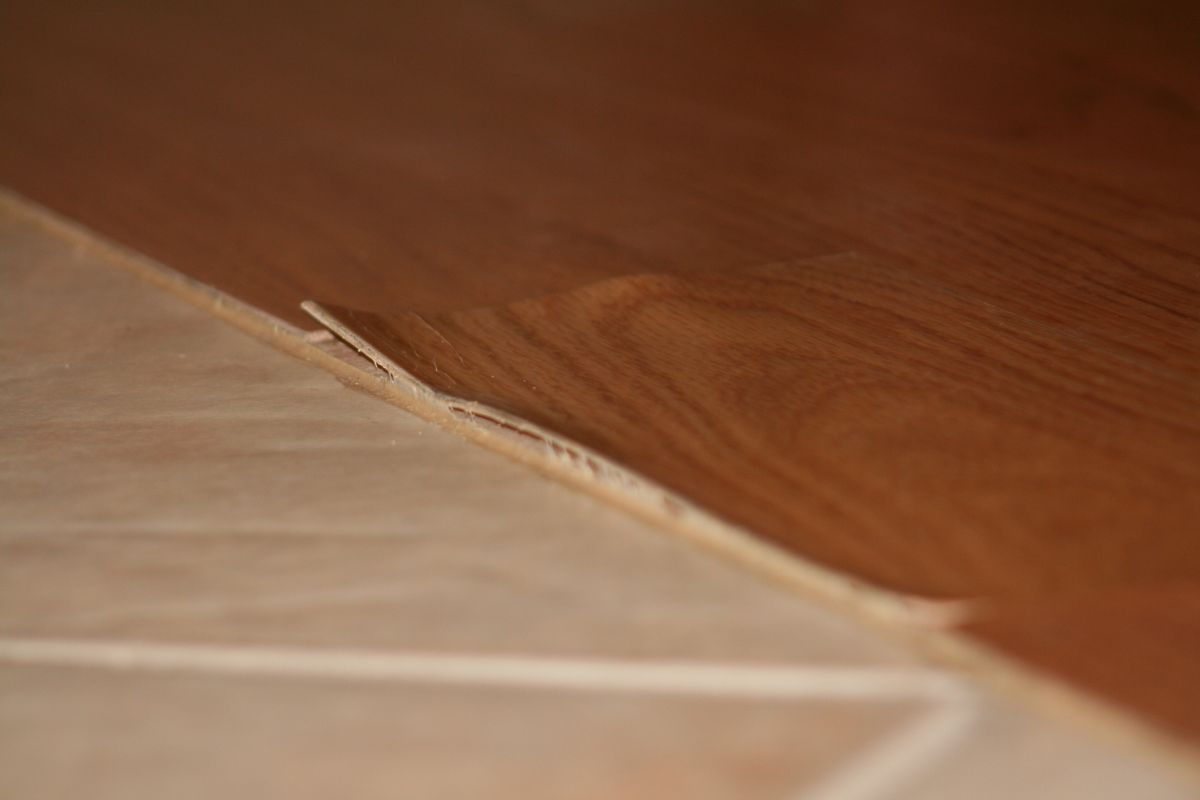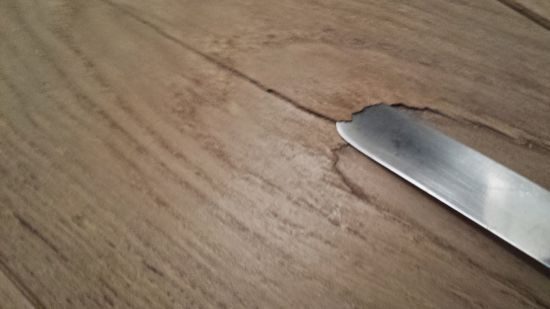
Delamination is a process occurring in the case of composite materials and steel. It takes place when the wood veneer or the surface layer separates from the backing material of a wooden floorboard. This problem can be faced by homeowners who picked engineered wood flooring for their house or flat.
There are various reasons behind delamination, which are sometimes unrelated. Moreover, in a given case several factors can have an impact on the floorboard, causing the delamination process.
Water penetrating the boards
First and foremost, delamination may affect floors in which water penetrates into the engineered floorboards, spreading between individual layers, thus damaging them and resulting in loss of their mechanical toughness.
Cleaning methods

Another equally important factor we all have to bear in mind can be the use of inappropriate cleaning methods, for instance using too much water or a failure to immediately remove spillages.
Such situations happen relatively often, because engineered flooring owners frequently do not have the required knowledge of how to properly clean the floors, removing all the dirt and dust, but at the same time protecting the floorboards against damage due to delamination. Try to browse the Internet in search of engineered wood floor cleaning methods and you’ll find a whole variety of different methods and techniques.
However, before trying out any of them remember to always check if the source is reliable and that it is a proper way of cleaning suitable for the floor you have. Moreover, read all the information carefully, avoiding common mistakes and making sure that you use the method correctly, in accordance with the instructions.
If you fail to do so, the condition of your engineered wood floor can deteriorate faster, which will shorten the life of your floor and entail a need to replace it much sooner than you would need to if you cleaned it the right way. We have gathered several maintenance methods, which will help you avoid damaging your floor while cleaning it.
Manufacturer’s Guidelines
Firstly, remember to check the guarantees of the manufacturer and pay attention to the guidelines of the given product – poor manufacturing quality of engineered boards is a quite frequent reason behind delamination.
However, when we’re talking about delamination, that’s not the only culprit.
Right advesive
Other factors resulting in such damage include poor adhesion, caused by using faulty adhesives, or some sort of surface contaminant, which prevents good adhesion. Moreover, the wood may also have a tendency to split due to faulty veneer and high ambient temperatures. The next important cause of delamination is installing floors on uneven sub-floors, as a result of which the boards bend and stretch, causing stresses on the adhesive bond.
High temperatures
Additionally, you can face problems with delamination in the case of excessive drying of wood veneer which is attributable to high temperatures coming from under floor heating, hot water pipes, or sky lights etc. Similarly harmful are too dry conditions in the given interior.
To make a diagnosis try to ask yourself the following questions: Are any hot water pipes located underneath the floor? Do you have under-floor heating?
If yes, what’s the maximum temperature? What’s the temperature and humidity level in the room? Have you observed any other floor damage apart from delamination, such as splitting of veneer or shrinkage? Is the moisture level in the given room lower than in other areas where delamination did not occur (which can suggest the need to check if there’s any localised heat source)?
All in all, “delamination” is a wood flooring damage whereby the individual floorboard layers separate (between the surface veneer and the substrate).
As we’ve already mentioned, poor manufacturing standards or water seeping between the cracks and penetrating into the floor, for instance due to improper maintenance, may be the reasons behind it. To avoid problems, always stick to specific maintenance guidelines and request detailed warranty coverage from the manufacturer.
Prevention is always better than cure, but if you’ve already observed such damage on your floor, you can resolve the problem, by replacing given boards. You can do that on your own, without any support from a professional flooring installer.
| Mon-Fri | 8:00AM – 5:00PM |
| Saturday | 10:00AM – 4:00PM |
| Sunday | 11:00AM – 3:00PM |





.svg)
.svg)